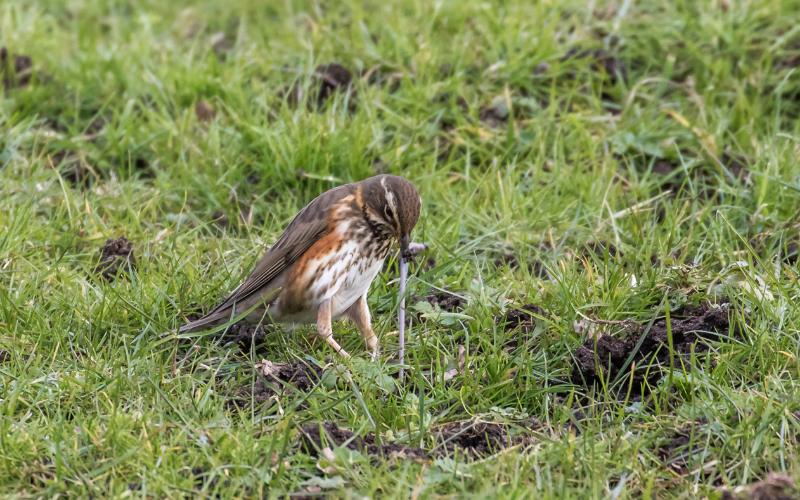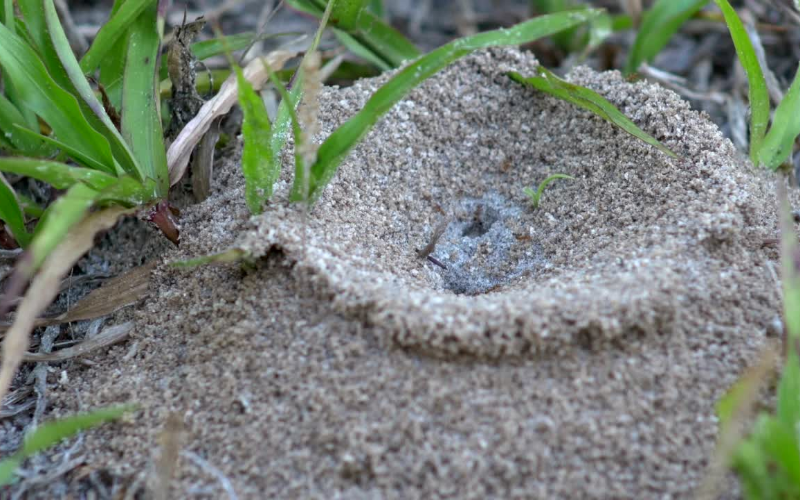Have you woken up and noticed that your yard has a bunch of little mounds of dirt after rain? The sight of these random piles of dirt can be a bit alarming at first, but don’t worry, they weren’t put there because of some sort of extraterrestrial activity. Actually, it is a really common problem and can happen for a few reasons. While it might be frustrating to see your lawn become a bit messy, there isn’t usually much to worry about. Lawn mounds come in different shapes and sizes so it’s important to do a little investigating when you notice them. I’ll try and give you a clear idea of what causes dirt mounds in a yard during the course of this article.
What Causes Little Mounds of Dirt in the Yard + Lawn? (Short Answer)
Most of the time, small dirt mounds in your yard after rain are the result of earthworms. These little piles of dirt are known as castings and are a mix of droppings and soil that worms create when moving around on the surface of the yard. Ants and other insects or critters that burrow in the ground can also be the cause of mysterious mounds of dirt in the yard.
What’s Causing the Small Dirt Mounds in Your Yard After Rain? (Possible Explanations)
So how can you tell what exactly is responsible for those small dirt mounds in the yard after rain? I’ll list the different culprits and describe some of the telltale signs.
Earthworms
After rain, and also during the spring, earthworms (also known as nightcrawlers) make their way to the surface. There are a number of reasons why they do this but the end result is usually a collection of their droppings and soil in little heaps. These will appear as dirt mounds in the yard but will have no holes. If you look closely you might see a small hole at the base of the mound where the worm dug its way back into the ground, but there won’t be a hole on top of the mound. Also, mounds of earthworm castings tend to be about an inch or two tall at most.
The good news is that earthworms are actually great for your soil. In fact, their castings are natural fertilizer! So while it might annoy you to have a ton of little dirt mounds, your lawn will probably be happy about it.
Ants
If you notice that your small dirt piles have a hole in the center of them, you could be looking at an anthill. These little mounds have a pretty iconic look to them and you can usually find ants crawling around them. Ants like to nest in soil or lawns and most yards offer good conditions for them.
Another thing to take into consideration is what is surrounding the dirt piles. Ants are always on the hunt for food and they try to build their homes close to a reliable food source. If you’ve got plants, trees, or shrubs with some flowers or fruit nearby, this could be attracting ants.
Other Insects or Critters
Since we’re talking about small dirt mounds in a yard after rain specifically, this probably isn’t the case but it is a possibility. Ground bees and even crayfish can take to a lawn or yard if the conditions are right. I should note that crayfish would only be a possibility if your yard is close to a water source. This happens less often but also results in small mounds an inch or two in size.
If the dirt piles are bigger, you could be dealing with a mole or gopher. But the presence of these critters in your yard would probably not be related to recent rainfall.
Small Mounds in Dirt vs in Lawn
When talking about what causes little mounds of dirt in a yard, it’s good to distinguish between the lawn and dirt/garden parts. Regardless of this distinction, small animals are the cause in both cases. The main difference between mounds in your lawn and mounds in dirt-filled areas (like garden beds) is identifying what left them there.
Earthworms are still the most likely to be responsible, and they are common in moist areas. So if you notice the piles appearing after rain or after watering your lawn or garden, you probably just have a large earthworm population. Whether in the lawn or in dirt, they will leave behind the same small piles. This is also true for ants.
For other critters, things change a bit depending on dirt or grass. Bees and crayfish will not be found in the dirt areas of your yard, but moles and gophers could be in either. Gophers leave behind much bigger holes about a foot in diameter, and can pull whole plants and other vegetation down from soil-filled areas. Moles don’t actually eat plants, but their tunnels can mess with roots and cause plants to yellow or die. If in grassy areas, you might also see raised ridges from where the mole was tunneling.




Leave a Reply